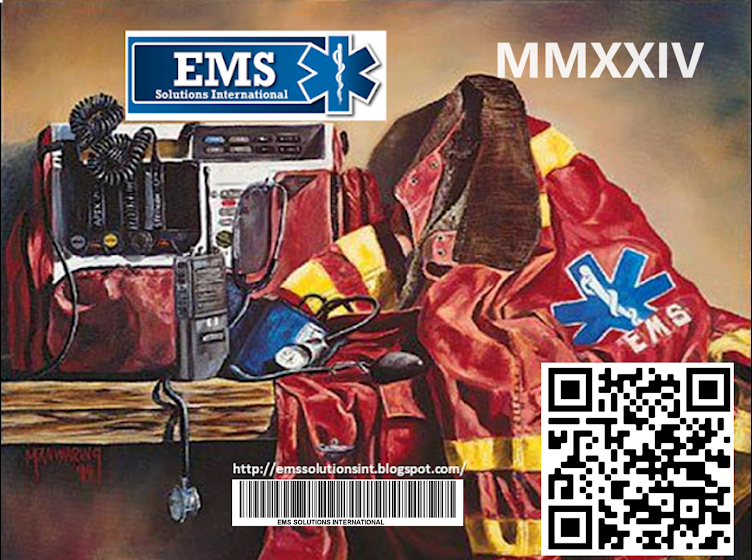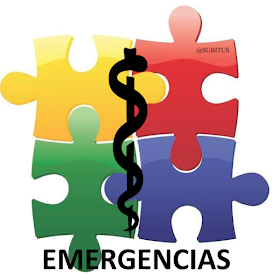Un análisis del transporte policial en un ensayo multicéntrico de la Asociación Oriental para la Cirugía de Trauma que examina los procedimientos prehospitalarios en pacientes con trauma penetrante
El transporte policial de pacientes con traumatismos penetrantes en lugares urbanos produce resultados similares en comparación con la Unidad de Transporte Avanzada. En esta población de pacientes, se debe enfatizar el transporte inmediato a la atención traumatológica definitiva.
Taghavi, Sharven MD, MPH, MS, FACS; Maher, Zoe MD; Goldberg, Amy J. MD; Haut, Elliott R. Doctor en Medicina, PhD, FACS; Raza, Shariq MD; Chang, Grace MD; Tatebe, Leah C. MD, FACS; Toraih, Eman MD, doctorado; Mendiola, Michelle MD; Anderson, Christofer MD; Ninokawa, Scott EMT; Maluso, Patrick MD; Keating, Jane MD; Burruss, Sigrid MD, FACS; Reeves, Mateo BS; Coleman, Lauren E. MD; Shatz, David V. MD; Goldenberg-Sandau, Anna DO; Bhupathi, Apurva BA; Spalding, M. Chance DO, PhD, FACS; LaRiccia, Aimee DO; Pájaro, Emily BS; Noorbakhsh, Matthew R. MD; Babowice, James DO; Nelson, Marsha C. MD, MPH, FACS; Jacobson, Lewis E. MD, FACS; Williams, Jamie MSML, BSN, RN, CCPR; Vella, Michael MD; Dellonte, Kate MBA, BSN, RN; Hayward, Thomas Z. III MD, MBA, FACS; Holler, Emma BS; Lieser, Mark J. MD; Berna, John D. MD; Mederos, Dalier R. MD, CCRP; Askari, Reza MD; Okafor, Bárbara MBA; Etchill, Eric MD, MPH; Colmillo, Raymond MD, FACS; Roche, Samantha L. MD; Whittenburg, Laura MS; Bernard, Andrew C. MD, FACS; Haan, James M. MD; Lightwine, Kelly L. MPH; Norwood, Scott H. MD; Murry, Jason MD; Jugador, Mark A. DO; Carrick, Mateo M. MD; Bugaev, Nikolái MD; tártaro, Antonio MD; Tatum, Danielle PhD
Información del autor
Journal of Trauma and Acute Care Surgery: agosto de 2022 - Volumen 93 - Número 2 - p 265-272
doi: 10.1097/TA.0000000000003563
ANTECEDENTES
El transporte policial (PT) de pacientes con traumatismos penetrantes en localidades urbanas se ha vuelto rutinario en ciertas áreas metropolitanas; sin embargo, no se ha determinado en un estudio multicéntrico si da lugar a mejores resultados en comparación con el transporte de soporte vital avanzado (ALS) prehospitalario. Planteamos la hipótesis de que el PT no daría lugar a mejores resultados.
MÉTODOS
Este fue un estudio observacional, prospectivo y multicéntrico de adultos (mayores de 18 años) con traumatismo penetrante en el torso y/o extremidad proximal que se presentaron en 25 centros traumatológicos urbanos. El transporte policial y los pacientes con ELA se asignaron a través del vecino más cercano, coincidencia de propensión. Modo de transporte también examinado por regresión de Cox.
RESULTADOS
Del total de 1.618 pacientes, 294 (18,2%) tenían TP y 1.324 (81,8%) por ELA. Después del emparejamiento, quedaron 588 (294/cohorte). Los pacientes eran principalmente negros (n = 497, 84,5 %), hombres (n = 525, 89,3 %, heridos por herida de bala (n = 494, 84,0 %) con un 34,5 % (n = 203) con un puntaje de gravedad de lesión de 16 o mayor. La mortalidad general por emparejamiento de propensión no fue diferente entre las cohortes (15,6% ALS vs. 15,0% PT, p = 0,82). En pacientes con lesiones graves (Injury Severity Score ≥16), la mortalidad no difirió entre PT y transporte ALS (38,8 % vs 36,0%, respectivamente, p = 0,68) El análisis de regresión de Cox controlado por factores relevantes no reveló asociación con un beneficio de mortalidad en pacientes transportados por ALS.
CONCLUSIÓN
El transporte policial de pacientes con traumatismos penetrantes en lugares urbanos produce resultados similares en comparación con la ELA. En esta población de pacientes, se debe enfatizar el transporte inmediato a la atención traumatológica definitiva.
NIVEL DE EVIDENCIA
Pronóstico y Epidemiológico; Nivel III.
Copyright © 2022 Wolters Kluwer Health, Inc. Todos los derechos reservados.
An analysis of police transport in an Eastern Association for the Surgery of Trauma multicenter trial examining prehospital procedures in penetrating trauma patients
Police transport of penetrating trauma patients in urban locations results in similar outcomes compared with ALS. Immediate transport to definitive trauma care should be emphasized in this patient population.
Taghavi, Sharven MD, MPH, MS, FACS; Maher, Zoe MD; Goldberg, Amy J. MD; Haut, Elliott R. MD, PhD, FACS; Raza, Shariq MD; Chang, Grace MD; Tatebe, Leah C. MD, FACS; Toraih, Eman MD, PhD; Mendiola, Michelle MD; Anderson, Christofer MD; Ninokawa, Scott EMT; Maluso, Patrick MD; Keating, Jane MD; Burruss, Sigrid MD, FACS; Reeves, Matthew BS; Coleman, Lauren E. MD; Shatz, David V. MD; Goldenberg-Sandau, Anna DO; Bhupathi, Apoorva BA; Spalding, M. Chance DO, PhD, FACS; LaRiccia, Aimee DO; Bird, Emily BS; Noorbakhsh, Matthew R. MD; Babowice, James DO; Nelson, Marsha C. MD, MPH, FACS; Jacobson, Lewis E. MD, FACS; Williams, Jamie MSML, BSN, RN, CCRP; Vella, Michael MD; Dellonte, Kate MBA, BSN, RN; Hayward, Thomas Z. III MD, MBA, FACS; Holler, Emma BS; Lieser, Mark J. MD; Berne, John D. MD; Mederos, Dalier R. MD, CCRP; Askari, Reza MD; Okafor, Barbara MBA; Etchill, Eric MD, MPH; Fang, Raymond MD, FACS; Roche, Samantha L. MD; Whittenburg, Laura MS; Bernard, Andrew C. MD, FACS; Haan, James M. MD; Lightwine, Kelly L. MPH; Norwood, Scott H. MD; Murry, Jason MD; Gamber, Mark A. DO; Carrick, Matthew M. MD; Bugaev, Nikolay MD; Tatar, Antony MD; Tatum, Danielle PhD
Author Information
Journal of Trauma and Acute Care Surgery: August 2022 - Volume 93 - Issue 2 - p 265-272
doi: 10.1097/TA.0000000000003563
BACKGROUND
Police transport (PT) of penetrating trauma patients in urban locations has become routine in certain metropolitan areas; however, whether it results in improved outcomes over prehospital Advanced life support (ALS) transport has not been determined in a multicenter study. We hypothesized that PT would not result in improved outcomes.
METHODS
This was a multicenter, prospective, observational study of adults (18+ years) with penetrating trauma to the torso and/or proximal extremity presenting at 25 urban trauma centers. Police transport and ALS patients were allocated via nearest neighbor, propensity matching. Transport mode also examined by Cox regression.
RESULTS
Of 1,618 total patients, 294 (18.2%) had PT and 1,324 (81.8%) were by ALS. After matching, 588 (294/cohort) remained. The patients were primarily Black (n = 497, 84.5%), males (n = 525, 89.3%, injured by gunshot wound (n = 494, 84.0%) with 34.5% (n = 203) having Injury Severity Score of 16 or higher. Overall mortality by propensity matching was not different between cohorts (15.6% ALS vs. 15.0% PT, p = 0.82). In severely injured patients (Injury Severity Score ≥16), mortality did not differ between PT and ALS transport (38.8% vs. 36.0%, respectively; p = 0.68). Cox regression analysis controlled for relevant factors revealed no association with a mortality benefit in patients transported by ALS.
CONCLUSION
Police transport of penetrating trauma patients in urban locations results in similar outcomes compared with ALS. Immediate transport to definitive trauma care should be emphasized in this patient population.
LEVEL OF EVIDENCE
Prognostic and Epidemiologic; Level III.
Copyright © 2022 Wolters Kluwer Health, Inc. All rights reserved.
https://journals.lww.com/jtrauma/Citation/2022/08000/An_analysis_of_police_transport_in_an_Eastern.15.aspx











